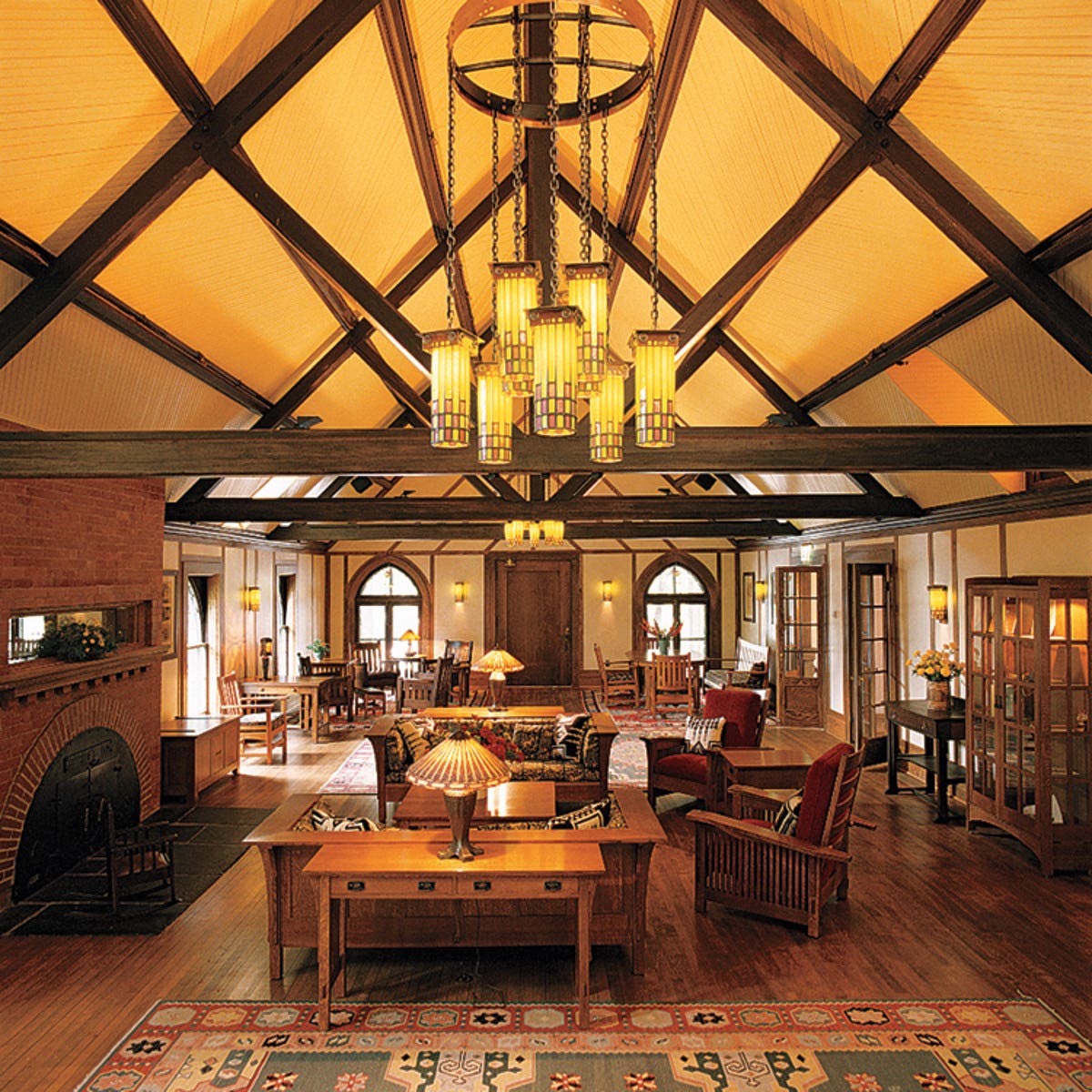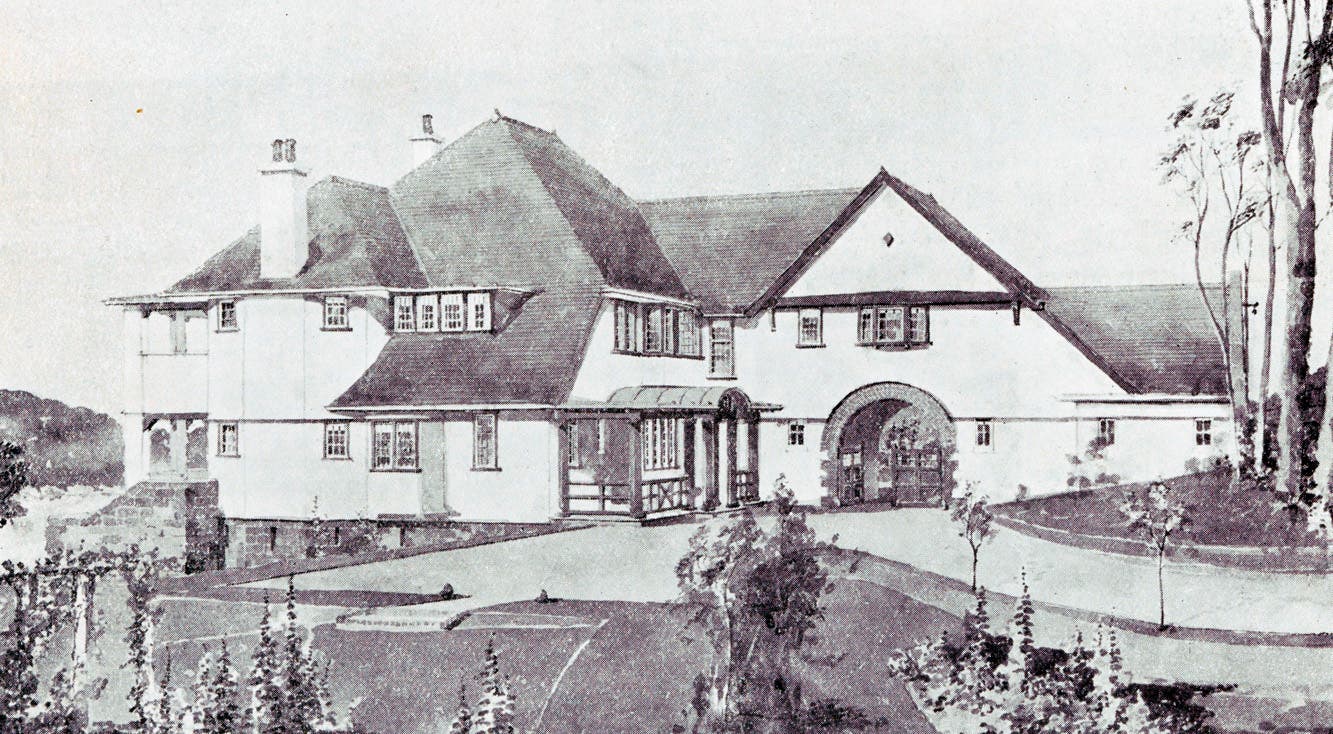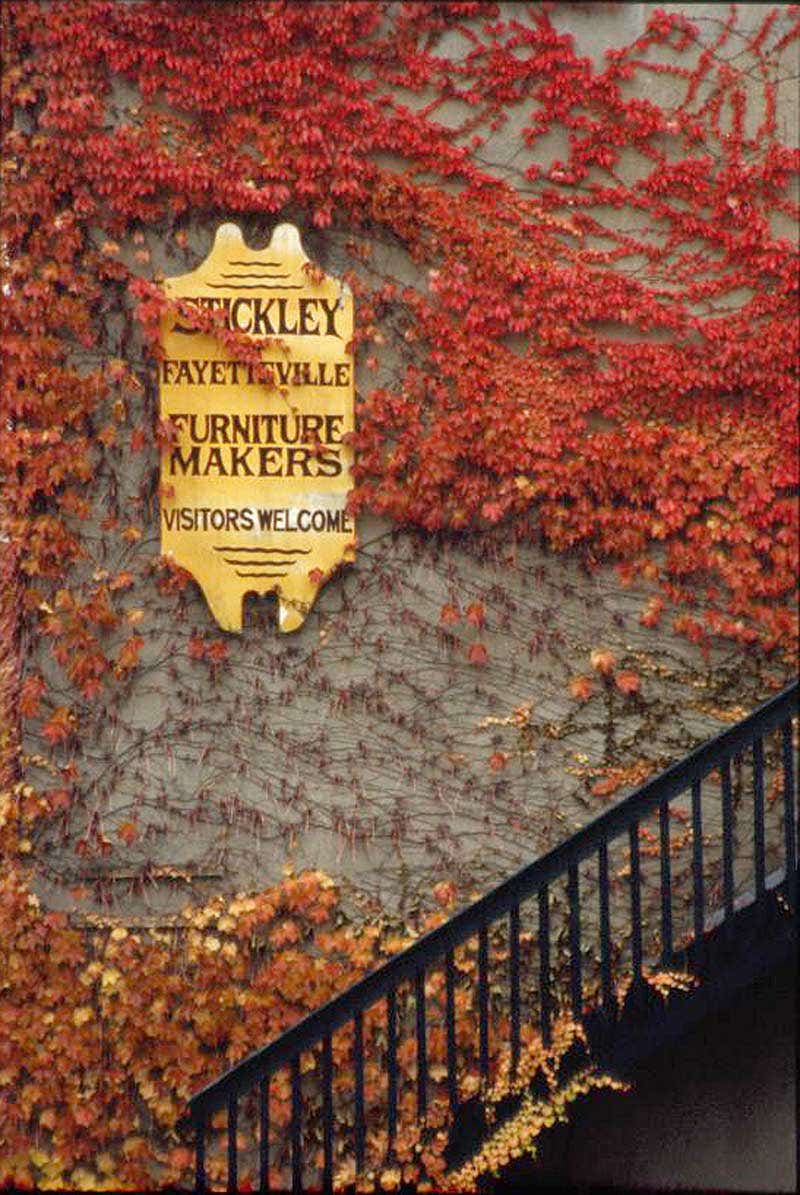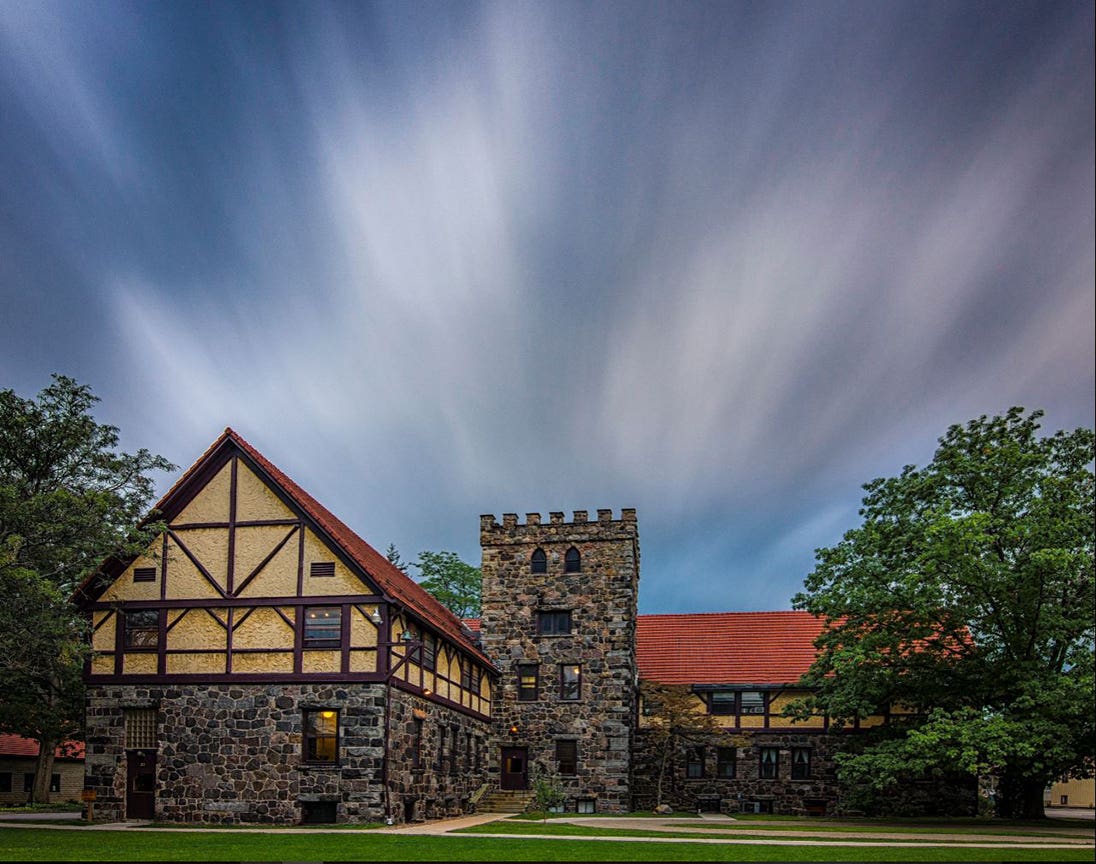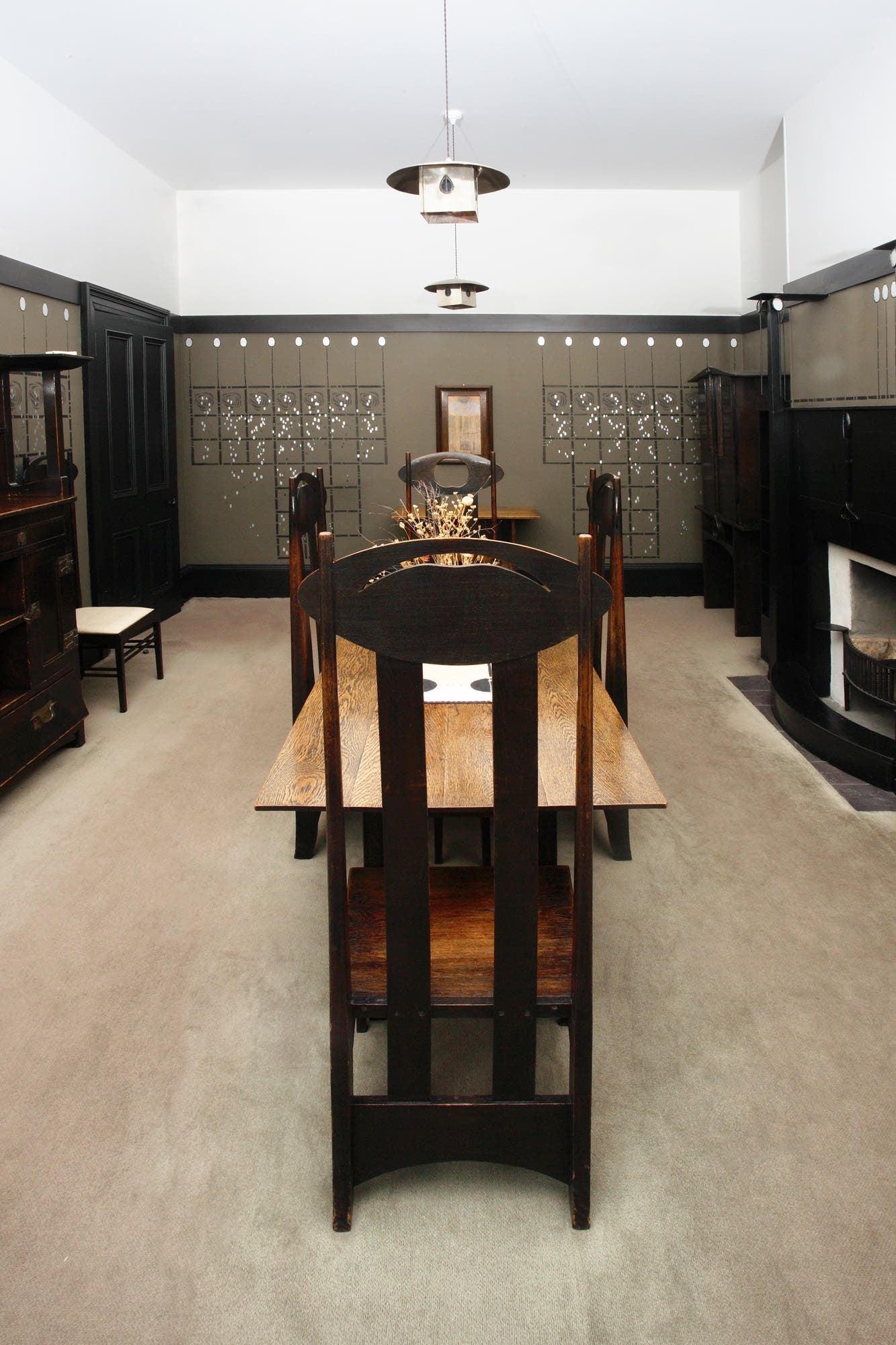Ragdale: Enduring Cottage on the Prairie
English Arts & Crafts met American innovation at the home of architect Howard Van Doren Shaw.
Once considered “the country” by city-dwellers who built weekend homes here, Lake Forest is just over 30 miles from downtown Chicago. The carefully maintained town is a solid link in a chain of suburban communities that stretches nearly to Wisconsin. The area maintains something of a bucolic aspect, however, and it’s easy to see how the successful architect Howard Van Doren Shaw (1869–1926) would have been attracted to this place where he would build his family home Ragdale.
In 1897, Shaw had done most of his residential and commercial work in the city of Chicago. But he was on the cusp of becoming the preferred architect for wealthy clients seeking to build substantial summer homes on the North Shore. A contemporary of fellow Midwesterner Frank Lloyd Wright, M.I.T. graduate Shaw spent time in the office of skyscraper pioneer William Le Baron Jenney. Shaw was a devotee of historic styles of architecture, a passion ignited when he traveled through Europe in his youth; he was also an admirer of English architects Sir Edwin Lutyens and C.F.A. Voysey. His borrowing was unabashed, yet he explored modern notions in the disposition of rooms, the relationship of a building to its site, and the integration of interior and exterior spaces. “Shaw didn’t have a personal geometry, a personal design schtick,” says noted preservation architect Walker Johnson, who oversaw an extensive restoration at Ragdale. “He and Wright, whom knew very well, were doing essentially the same thing, except that Shaw’s designs were more derivative of English Arts & Crafts.”
With its double gables and steep roof, a stucco facade, and windows outlined in blue-green, Ragdale could be a page from a storybook. It was intended, the architect stated, as a place for “plain living and high thinking.” Poets Carl Sandburg and Vachel Lindsay are said to have been among the family’s visitors. Theatricals performed al fresco (many penned by Shaw’s wife, Frances) were a staple. Daughter Sylvia Shaw Judson expressed her creativity through sculpture; her “Bird Girl” statue is familiar to readers of John Berendt’s novel Midnight in the Garden of Good and Evil.
Visitors to Ragdale today still find it a warmly enveloping cocoon of a house. The capacious hall, framed by a simple staircase at one end and the living room at the other, features a shallow vaulted ceiling and paneled walls inset with leaded windows that frame the adjacent dining room. Its ceiling articulated with plain timber beams, the dining room is a relatively compact space with a linen-fold sideboard designed by Shaw and a collection of hand-painted Quimper pottery. Shaw probably also designed the wallpaper, which has been reproduced by Trustworth Studios (trustworth.com) from a 1" x 3" strip found under a switch plate and by reference to a 1906 photograph.
The living room is handsome and plain, graced with a broad inglenook and French doors leading to an enclosed porch with a view of the lawn and meadows beyond. For his clients, Shaw designed summer estates that could be formidable in scale and style. At Ragdale, he preferred simplicity and hominess.
In 2012, Johnson Lasky Architects led an extensive restoration of the property. Sagging floors and a compromised roof were reinforced, portions of the foundation were rebuilt, all 74 windows were refurbished, and the exterior was restuccoed. Inside, hardwood floors were sanded, stained, and sealed; period-appropriate paint and wallpapers, some of them earlier specified by Shaw, were replaced or added. Paneling applied in the 1920s by the Shaw family remains in the living room, but in a nod to the paper that was there initially, an upstairs bedroom is now papered in Voysey’s ‘The Saladin’ (also from Trustworth Studios).
A wing chair and Mission-style rocker sit companionably by the fireplace in the living room. An old sign from an English pub hangs in the dining porch. Paintings by Shaw’s mother and sculptures by daughter Sylvia— animals, a female torso, a bust of her father—remain in their home. Rooms are furnished with pieces acquired over the family’s nearly 100 years here. Other furnishings were donated by noted Arts & Crafts collector John Bryan of Crab Tree Farm, nearby in Lake Bluff.
Ragdale’s spirit was kept alive by Shaw’s granddaughter the poet Alice Judson Hayes, who continued to spend summers here into the 1980s. Having designated Ragdale as an artists’ retreat, Hayes perpetuated Shaw’s vision of the family home as a place of “plain living and high thinking.”
Artists in Residence
Van Doren Shaw’s family home is now headquarters of the Ragdale Foundation, which offers supportive residencies to artists, musicians, and writers. Like the historic retreats Yaddo, the MacDowell Colony, and the Skowhegan School of Painting & Sculpture, the Ragdale Foundation offers creative professionals the luxury of time and space, peace and quiet. Every year, and with no more than 13 artists in residence at any time, the house welcomes 150 artists, writers, composers, and choreographers to afford them the chance to work uninterruptedly for up to 25 days at a stretch. When they’re not at a desk or an easel, residents recharge by walking the property’s 50 acres; conversation ensues over dinner family-style.
Arts & Crafts Homes and the Revival covers both the original movement and the ongoing revival, providing insight for restoration, kitchen renovation, updates, and new construction. Find sources for kitchen and bath, carpet, fine furniture and pottery, millwork, roofing, doors and windows, flooring, hardware and lighting. The Annual Resource Guide, with enhanced editorial chapters and beautiful photography, helps Arts & Crafts aficionados find the artisans and products to help them build, renovate, and decorate their bungalow, Craftsman, Prairie, Tudor Revival, or Arts & Crafts Revival home.



